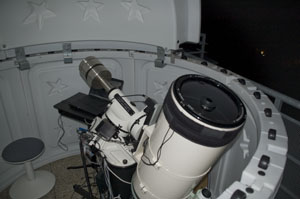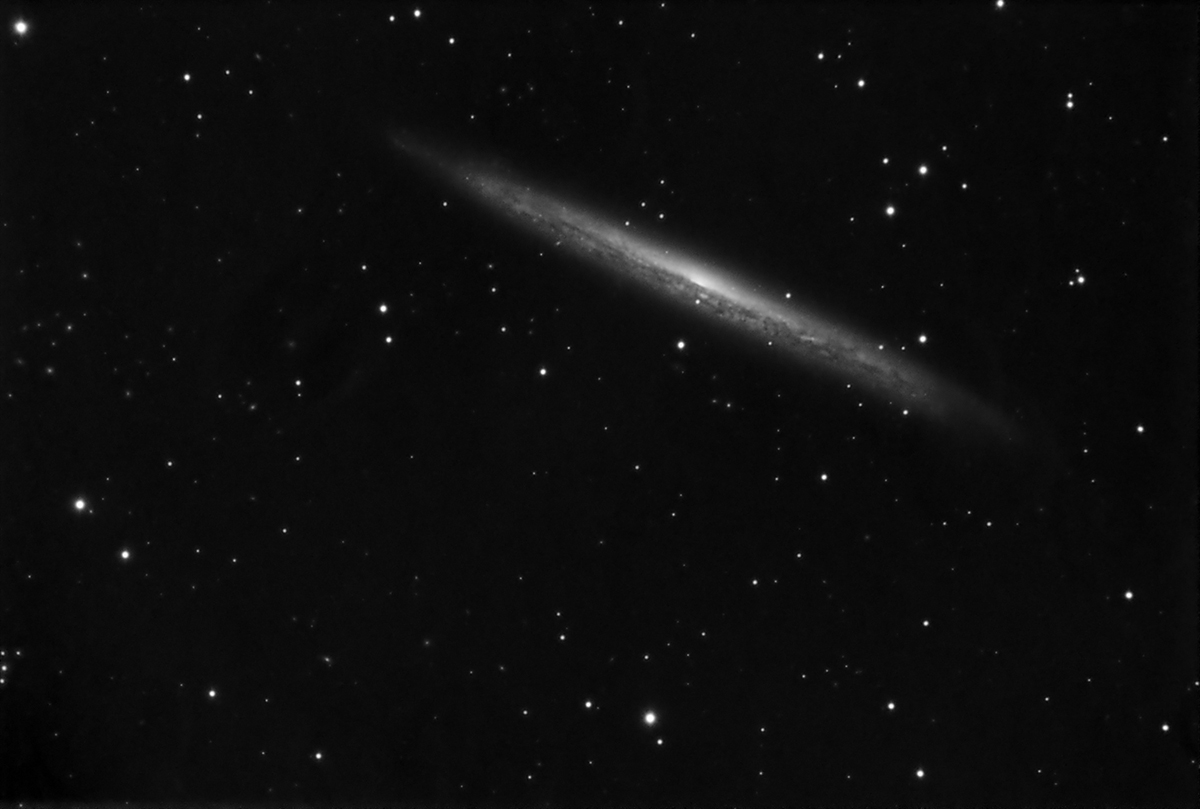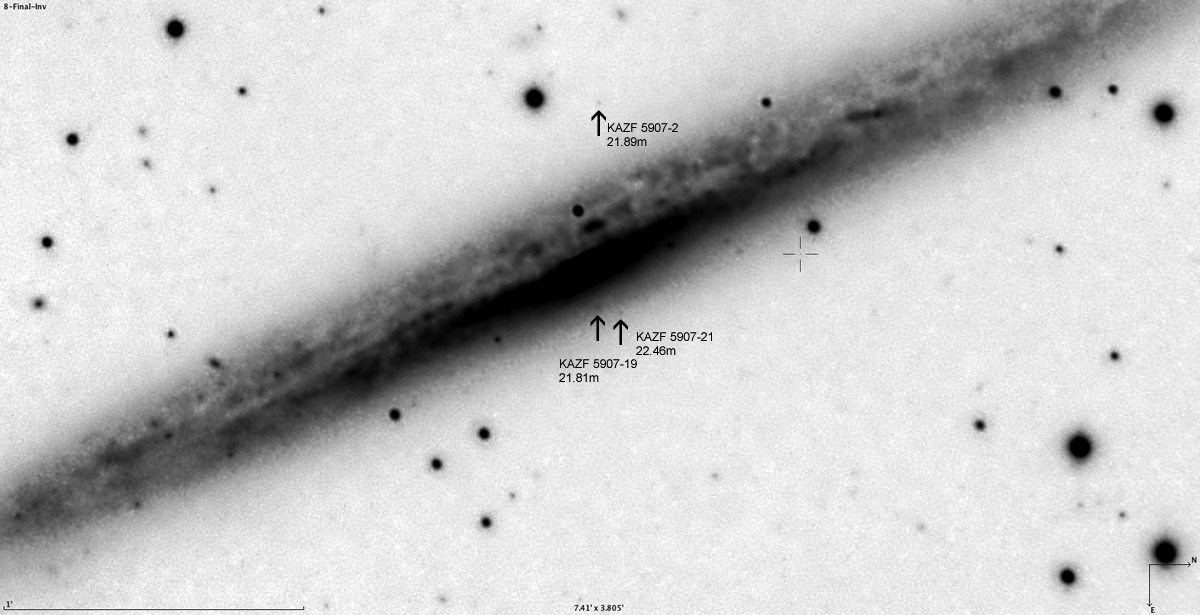NGC 5907
NGC 5907 - The Splinter, Spiral Galaxy in Draco
| Image Type: | Monochrome | Constellation: | Draco |
| Telescope: | 10" Aries f/15 Maksutov-Cassegrain on Astro-Physics 900GTO German Equatorial | Object: | Sb+ Galaxy |
| Focal Length: | 2642mm | Distance: | 50 million light years |
| Resolution: | 0.53"/pixel at full size (image scale = 68%) | Dimensions: | 12.7'x1.4' |
| Accessories: | Moravian G1-0300 as Off-Axis Guider, 0.67X Astro-Physics CCD Telecompressor | Magnitude: | 11.1 (V) |
| CCD: | QSI 532wsg, running at -20 deg. C | ||
| Exposures: | 23x5 min |  Aries MCT in Malvazinky Observatory |
|
| Filter(s): | Astrodon Clear | ||
| Exposure Date: | 10 April 2011 | ||
| Location: | Malvazinky Observatory in Prague, Czech Republic | ||
| Seeing, FWHM: | 1.9" | ||
| Processing Software: | MaximDL, CCDStack, PixInsight, Photoshop | ||
| Image Acquisition Software: | MaximDL, TheSky6, CCDAutoPilot, FocusMax, PinPoint | ||
| Remarks: | CCDStack: * Calibrate * Register * Normalize * Stack using Median and Poisson Data Rejection. PixInsight: Photoshop: PixInsight: |
||
Identification of KAZF Extragalactic Globular ClustersA few bright globular clusters that are part of the NGC 5907 galaxy have been identified using the Kissler-Patig+Ashman+Zepf+Freeman catalogue and Aladin software. These globular clusters have appeared in the 1999 publication during imaging of NGC 5907 with the Hubble Space Telescope.
Other Interesting ThingsSDSS J151556.56+561558.2 Quasar:
Detailed Information on the quasar from NASA/IPAC Extragalactic Database This object has red shift of 1.875 which translates to the following properties: Light Travel-Time : 9.835 Gyr |
|||


